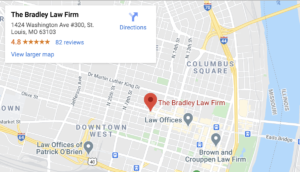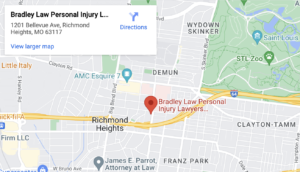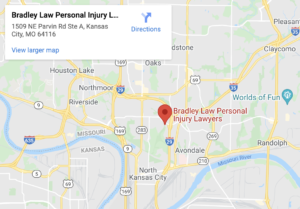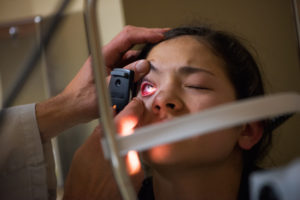
Humans are visual creatures. By some estimates, up to 85% of the information your brain receives comes through the eyes. If you lose your vision as a result of a traumatic accident, you may need occupational therapy to relearn how to perform most tasks. You may even need a service animal to guide you.
Table of Contents
The Parts of the Eye
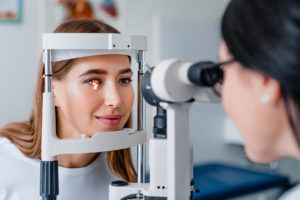
Your eyes connect to your nervous system, collecting light information for your brain to parse. The brain creates an image based on that data, which it uses to learn about your environment and properly control your body. For instance, your brain uses visual data to decide whether you should try to catch or dodge an object flying toward your head. If it decides to dodge, your brain predicts the path of the object and moves your body out of the way.
Your eye has several structures that collect and focus light so your brain can make use of it. The eyeball, or globe, sits in the eye socket of your skull. The orbital bones surround the globe, protecting it and guiding its movement. Muscles are anchored to the orbital bones and attach to the globe, allowing the eye to move. The optical nerve and blood vessels attach to one another via the back of the globe.
The cornea sits at the front of the eye, covering the iris and protecting the eye by blocking foreign matter from entering the globe. It also begins the process of focusing light entering the eye.
The iris is a muscle that sits behind the cornea and controls the amount of light that enters the pupil by dilating and contracting. A lens sits behind the iris. Muscles stretch or relax the lens to bend light, so it focuses on the retina at the back of the eye.
The retina is a light-sensitive nerve ending that detects the color and intensity of light. That information gets sent along the optic nerve to the occipital lobe of the brain, which processes visual information and assembles images from that optical data.
How Do Eye Injuries Happen?
Eye injuries can happen in several different ways, including the following:
Debris
Debris that lands or ends up in the eye can damage the globe or cornea. It can also become tangled in the muscles that control eye movement and even sever the nerves or blood vessels that lead to the eye muscles. For example, something like glass created by a motorcycle accident could spray into the motorcyclist’s face and injure their eyes.
Blunt Trauma
Blunt trauma to the face can damage the eye and its surrounding structures. For instance, if you were to hit your face against the dashboard of your vehicle during a car accident, you could severely injure your eyes.
Penetrating Trauma
A foreign object that penetrates your eye can permanently damage your vision. These injuries often happen as a result of workplace accidents. A machine or tool could propel a broken blade or piece of material into the eye.
What Are Some Examples of Eye Injuries?
You could suffer many types of eye injuries depending on the nature of your accident and which eye structures get damaged. Some examples of eye injuries include the following:
Scratched Cornea
A cornea can be scratched when debris grazes the front surface of the eye. A corneal abrasion can cause any of these symptoms:
- Pain
- Redness
- Watery eyes
- Blurry vision
Corneal abrasions usually heal with home care, but they can also expose you to developing an eye infection. A doctor might prescribe antibiotic eyedrops to prevent such a complication.
Fractured Orbital
A blunt impact to the skull can fracture the bones of the eye socket, and a fractured orbital can cause the globe to dislocate or move out of alignment. As a result, you might experience blurry or double vision, though more serious injuries are possible.
A fractured orbital could send bone fragments into your eye socket, where they can potentially get tangled up in your eye muscles, severing nerves and blood vessels or even puncturing the globe. Doctors might allow the orbital to heal on its own without any immediate treatment, or they may operate to reconstruct the bone by implanting a plate.
Ruptured Globe
A ruptured globe can result from blunt force trauma to the eye or another penetrating injury. When the globe ruptures, the structure of the eyeball is destroyed, and the eyeball itself can deform without immediate surgery.
During surgery, doctors will suture the rupture closed. They will usually not try to deal with any vision loss immediately and instead focus on repairing the wound and stabilizing your injury so you can begin to heal. You may need multiple surgeries, but even with them and time to heal, you have a high likelihood of suffering permanent vision loss following a globe rupture.
Detached Retina
Blunt or penetrating trauma can cause the retina to detach. The retina is highly susceptible to damage, and when it detaches from the back of the eye, it loses its blood supply. It will die within a matter of days, causing permanent blindness.
Doctors can reattach a retina through cryosurgery or laser surgery, which can create scar tissue to reattach the retina to the eye. Doctors can also inject an air bubble into the eyeball, which holds the detached retina against the eye, where it can heal while the patient lies in a particular position.
What Compensation Can I Recover After an Eye Injury?
You could pursue compensation if your eye injury happened as a result of someone else’s negligent actions. Your compensation in an insurance claim or lawsuit can cover your economic and non-economic losses.
Your economic losses include the paychecks you missed, as well as your past and future medical costs, whereas non-economic losses account for your diminished quality of life. When you lose your vision, you will experience pain, depression, anxiety, and fear, among other symptoms and emotions.
Contact an Experienced Missouri Personal Injury Lawyer for Help
Eye injuries that cause partial or total vision loss can significantly diminish your quality of life and prevent you from working. If you find yourself in such a set of circumstances, contact us today at Bradley Law Personal Injury Lawyers for a free consultation to discuss your eye injury and how you can recover compensation for its effects. Call us today at (314) 400-0000.


